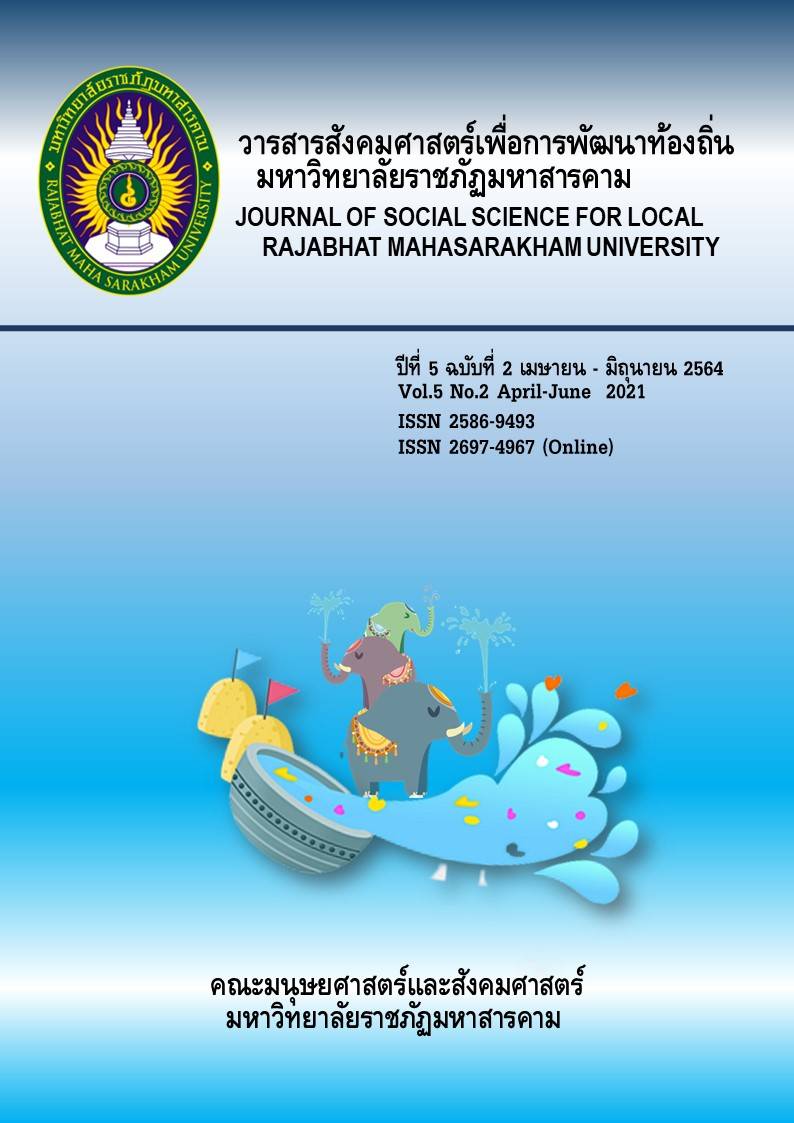Behaviors in accessing Social Media of Rajabhat Maha Sarakham University Students.
Keywords:
Social media, Behaviors, StudentsAbstract
The purposes of this study were 1. to study behaviors in accessing social media of Rajabhat Maha Sarakham university students, 2. to study the impact of social media access, and 3. to compare the impact of social media access on an individual. The study was conducted in a Quantitative Research, and the instrument was a questionnaire. Randomized by the accidental sampling method, the samples were 386 Rajabhat Maha Sarakham University students during the 2019 academic year. The statistics were percentage, mean score, standard deviation, and one-way ANOVA. The results of the study 1) indicate that 79.6 % of students access social media more than once a day; most of the participants (38.3%) access the media longer than 3 hours; most of them access social media at night (58.7%) they access the media at home or dormitory (98.4%) smartphones are used as accessing devices (97.4) Facebook is the most popular platform (61.7%) friends, boyfriends, and girlfriends recommendations made most of the participants join social media (80) communication is reported to be the main purpose of the access (27.9) entertainment is the main content the participants access on social media (28.6%). 2) The students were affected by social media at an average level in terms of education, family, society, and emotion (X̅ =3.27). 3) There were no significant differences between the impacts of social media on students of different genders, parents’incomes, and educational funds. However, there was a significant difference between the impact of social media on students with different years of study in terms of their family (p=0.03). A significant difference between the impact of social media on students in different faculties in terms of society was found (p=0.03). Lastly, there was a significant difference between the impact of social media on students with different social media experiences in all aspects of the study at a statistical level of 0.05.


